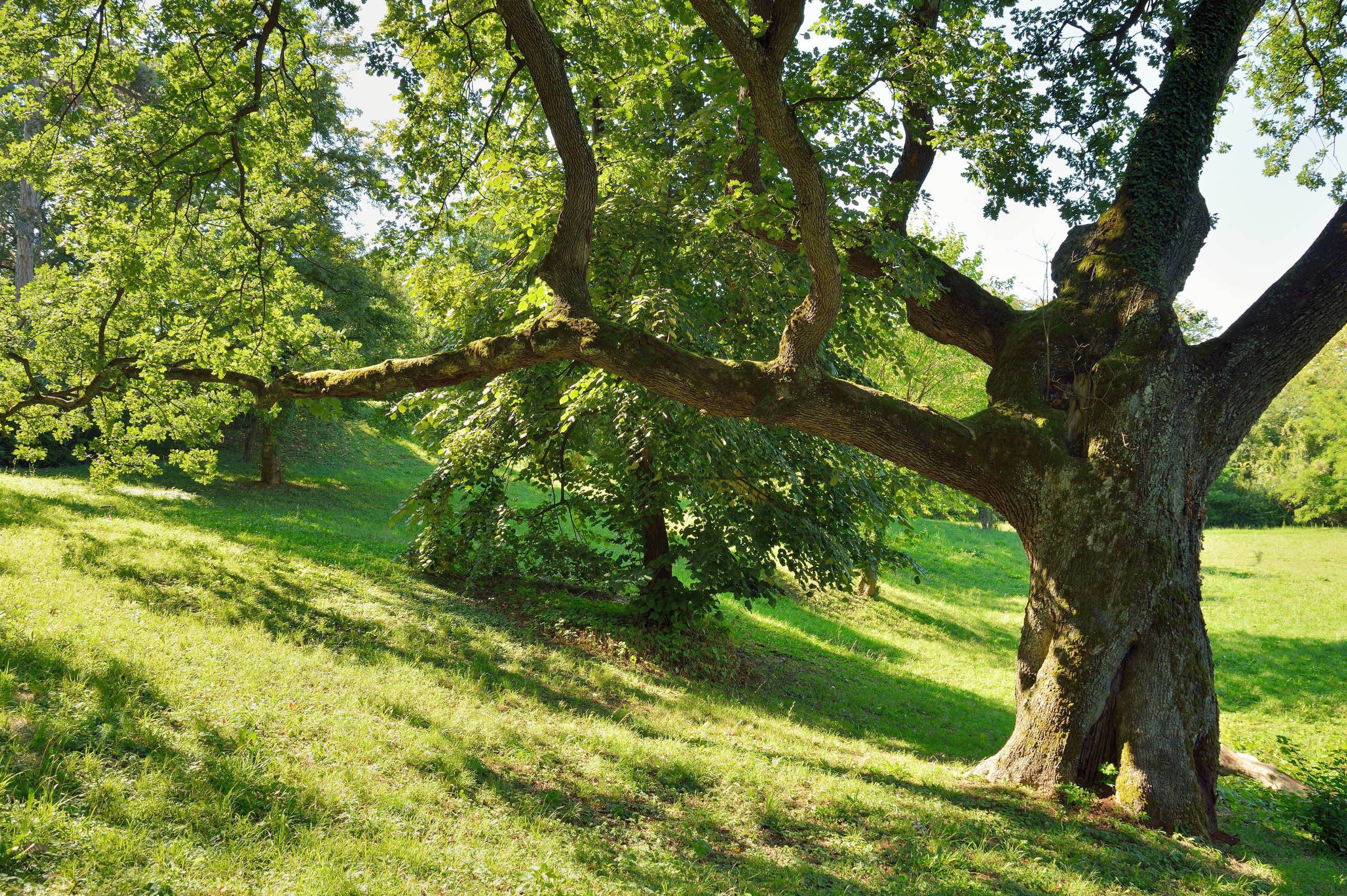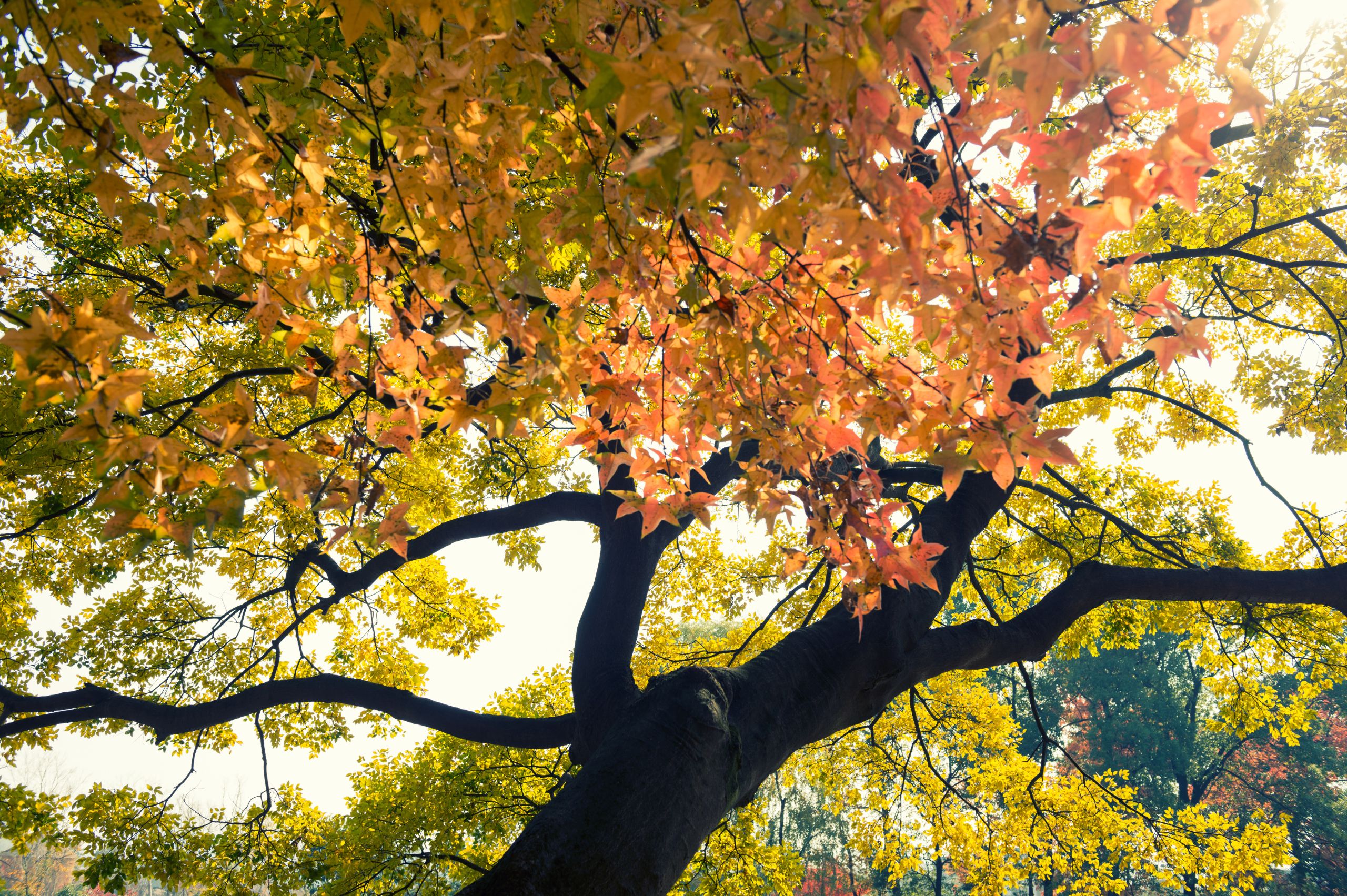One of the primary culprits responsible for the decline of oak trees in the Staunton, VA, area is Hypoxylon Canker, a fungal disease that targets oak trees specifically. If your oak trees are declining and you’re not sure why, here’s how you can tell if this is the reason.
Hypoxylon Canker: What It Is and How to Identify It
Hypoxylon Canker is a fungal infection caused by Hypoxylon spp., a genus of fungi that targets hardwood trees, with oaks being particularly vulnerable. This disease typically enters the tree through wounds or stressed areas, such as those caused by ineffective pruning, storms, or other environmental factors. Once inside, the fungus spreads rapidly, leading to the development of cankers on the tree’s bark.
Identification of Hypoxylon Canker involves observing certain key characteristics. Affected trees often display large, sunken areas on the bark, accompanied by a distinct black or gray discoloration. As the disease progresses, the cankers expand, causing the bark to crack and fall off. Additionally, a powdery substance may be present on the surface of the cankers, further confirming the presence of the fungus.
Underlying Factors That Make Oak Trees Susceptible to Disease
Several factors contribute to the increased susceptibility of oak trees to Hypoxylon Canker and other diseases. Understanding these underlying issues is crucial for implementing effective prevention strategies. These things include:
- Poor soil conditions
- Inadequate pruning practices
- Environmental stressors (like drought or flooding)
- Tree injury from construction or other physical harm
These are all common factors that weaken oak trees, making them more susceptible to fungal infections. Additionally, the presence of other diseases or pests can compromise the overall health of the tree, creating an environment conducive to the development of Hypoxylon Canker.
What to Do If Your Oak Tree Is Dying
Hypoxylon Canker exists naturally in our environment, and there is no specific treatment that can completely get rid of it, so prevention is key to help your oak tree stay healthy. If you notice signs of Hypoxylon Canker or suspect that your oak tree is in distress, here are some recommended steps to address the issue:
- Professional Diagnosis: Consult with a certified arborist or tree service to accurately diagnose the problem and determine the extent of the infection.
- Pruning and Removal: Prune affected branches and remove dead wood to minimize the spread of the disease. In severe cases, the entire tree may need to be removed to prevent it from becoming a safety hazard.
- Soil Improvement: Enhance soil conditions around the tree by providing adequate nutrients and improving drainage. Healthy soil promotes tree vigor and resilience against diseases. Read more about how wood chips can be helpful for mulching around trees and other plants.
- Preventive Measures: Implement preventive measures such as proper pruning, regular tree inspections, and maintaining overall tree health to minimize the risk of future infections.
While Hypoxylon Canker is not curable, with the right preventative actions, your tree can continue to live and grow for quite some time.
Identifying Why Your Oak Tree is Dying
Just because Hypoxylon Canker is the most common cause of oak tree decline in the Staunton area doesn’t mean it’s the only option. Other things that impact the health of these trees includes things like:
- Oak wilt
- Actinopelte Leaf Spot
- Leaf Blister
- Root Rot of various varieties
- As well as other insects and pests
Keeping your tree healthy or removing diseased parts safely is our first priority. If you are noticing a decline in the health of oak trees on your property, reach out today for a free estimate to start the process of securing timely and effective intervention.




